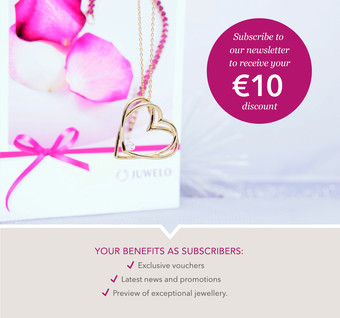Enhancement & Care of Gemstones
Unfortunately, gemstones don't come out of the ground ready to be set in jewellery. Raw crystals from the earth are usually called 'rough gemstones' (or just 'rough') and this is actually very apt - rough gems can look pretty rough!
To make sure each gemstone reaches its full potential, lapidaries and jewellers employ a variety of techniques. Some of these, like cutting and setting, are immediately visible, while others such as enhancements or treatments remain relatively unknown despite being used for thousands of years. Practiced in India for over 4,000 years, the earliest known gemstone enhancement is heating a gem to improve its colour. Oiling to improve a gem's clarity is another ancient technique that has been used for over 2,000 years.
Not all gemstone enhancements can trace their origins to antiquity, some such as the beryllium bulk diffusion of Sapphires and the physical vapour deposition (PVD) of Mystic Topaz, are the result of more recent innovations. In the gem industry, the term 'enhancements' sometimes exclusively refers to traditional techniques that are so common they are seldom mentioned, reserving 'treatments' for more modern methods. The problem is that this is not universal - both terms are often used to refer to the same processes.
Regardless of what they are called, all gemstone enhancements simply accentuate the beautiful end results of gemstones natural formation. Defined as any process other than cutting that improves a gem's appearance (e.g. colour, clarity, phenomena etc.), durability, value or availability, with the vast majority of gems enhanced in some way, these processes have become an important part of the modern gemstone industry. Given the prevalence of enhancements, one term that still has a universal meaning is 'natural'. A 'natural' gemstone is one that has not been enhanced or treated in anyway.
Enhancement Disclosure
The World Jewellery Confederation (CIBJO or Conf'd'ration Internationale de la Bijouterie, Joaillerie, Orf'vrerie, des Diamants, Perles et Pierres) is the organisation that records accepted trade practices and nomenclature for the global gem and jewellery industry. Under their guidelines, all jewellers should be aware of how the gems they sell are enhanced, disclosing this information to their customers. In a world where many enhancements are very difficult to detect (or even undetectable) using standard gemmological equipment, enhancement disclosure can be confusing for the consumer. Our threefold enhancement policy is designed to keep things simple, providing you all the information you need to make informed buying decisions:
- We include a statement on every customer invoice advising you to always assume enhancements when purchasing our gemstone jewellery, directing you to this page for more information on what enhancements may have been applied to the gemstones you have purchased. This is not to say that every gem we sell is enhanced, we also sell 'natural' gemstones, it's just easier if you work off this assumption.
- We only knowingly accept enhancements that are permanent with normal wear. The only exception is Emeralds, whose beauty is enhanced and easily maintained by oils or polymers. We get our information on gem enhancements from universities, gem laboratories, trade associations, regulatory bodies, professional journals, books, the internet as well as individual experts.
- Gemstone enhancements can make gemstones more beautiful, affordable and even more durable. Despite this, some gems require special care. While this section includes some simple gem grooming do's and don'ts, the big table below shows the potential enhancements applied to each gem variety, their frequency, as well as any special care instructions.
Gem Care Do's & Don'ts
While one of the defining attributes of gemstones is durability, much as you wouldn't slip on Prada stilettos for a lively game of beach volleyball, following a few simple do's and don'ts will make sure your gemstones last for generations.
- Do keep your gemstone jewellery in the separate compartments of a jewellery box or in cloth pouches, always storing your gem necklaces flat. When storing chains in pouches, leaving the catch just hanging out will reduce tangles.
- Do gently wipe your jewellery with a lint-free cloth after each wearing to remove oils and salts.
- Do periodically clean your jewellery. Rings can easily collect dust, soap and grime behind the setting if you wear them regularly. While a dirty gem will loose colour and brilliance, most gemstones are easily cleaned by soaking them in water with a little gentle soap. If especially dirty, use a very soft toothbrush to gently scrub behind the gem. Organic gems like Pearls or Amber should only be wiped clean with a moist cloth.
- Do pull out a watch's crown to the setting position when storing them to save the battery.
- Do listen to your jewellery. If you think a gem is loose in its setting, very gently tap it close to your ear. If you hear a 'rattle' the gem is definitely loose and will need to be repaired.
- Do ask the seller about how to clean and care for the jewellery you have purchased.
- Do take the time to read the following table.
- Don't put on your jewellery before using cosmetics, hair spray or perfumes. Some gemstones are porous and may absorb chemicals that can discolour them.
- Don't ever remove your jewellery by pulling on the gems as this can loosen their settings resulting in them falling out!
- Don't ever store your jewellery in heaps as your gems can scratch each other. As almost every gemstone is harder than gold, silver or platinum, even the finish of your jewellery can be damaged if you throw your jewellery in a heap.
- Don't wear your jewellery when playing sports, doing housework or anything else that risks impact, exposure to chemicals or heat. Simply exercise common sense.
- Don't use a commercial cleaning solution until you have checked it is suitable for your gem.
- Don't use ultrasonic or steam cleaners for every gem. Check the table below to see what gems are OK for these mechanical cleaners, but as a general rule, when in doubt, leave it out. Ultrasonic cleaners transmit vibrating energy waves to knock dirt off the jewellery, while steam cleaners use jets of steam to blast dirt off jewellery.
- Don't use silverware polish to clean sterling jewellery. Apart from getting lodged in nooks and crannies, it is not gem friendly.



